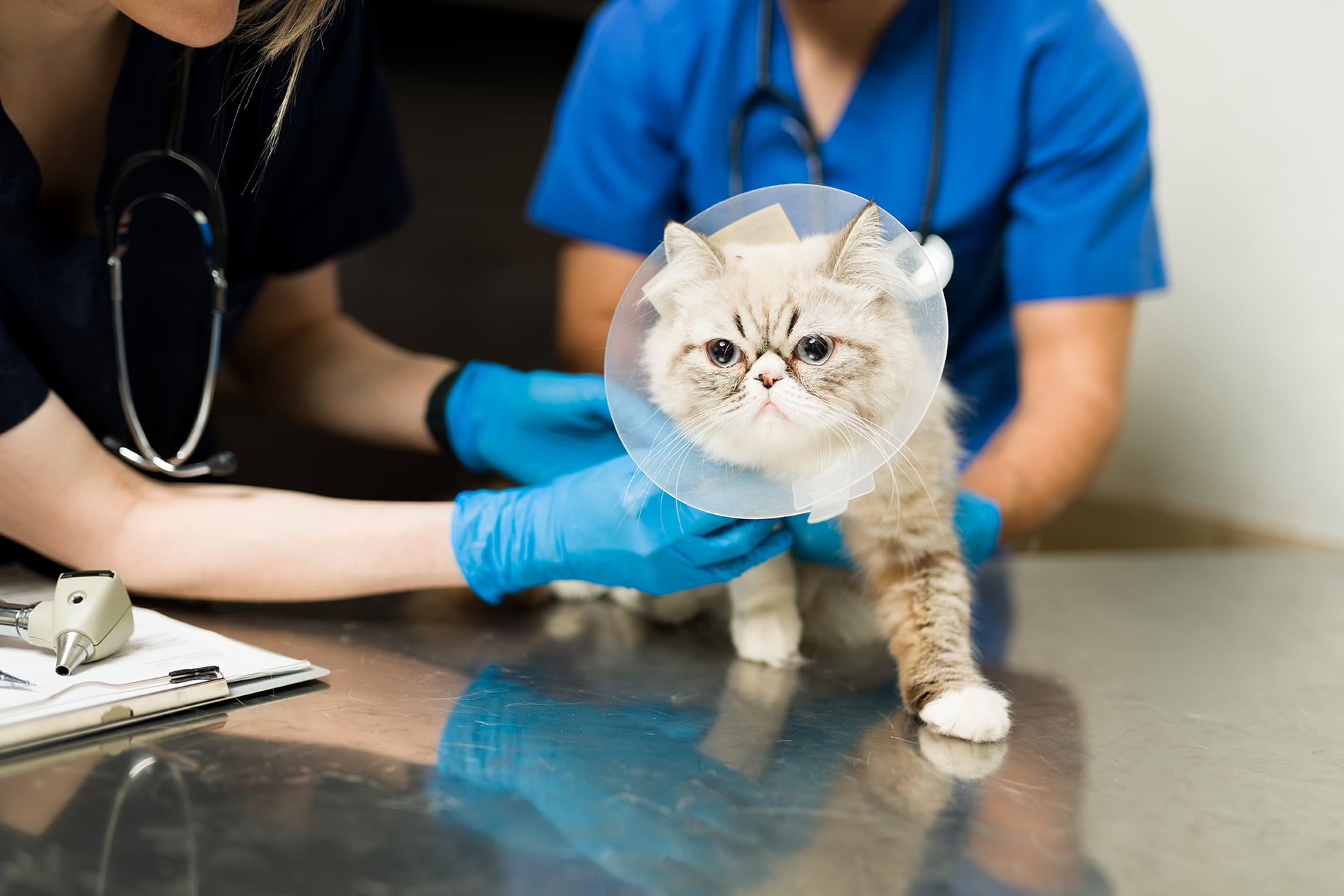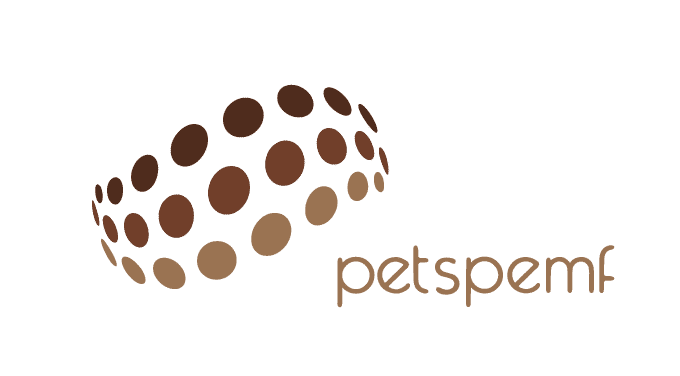Most pet owners can say with certainty that their fur babies have had a wound at some point in their lives. Minor scratches, post-surgical wounds (spay and neuter most common), deeper wounds from fights, and so on. The size of the wound will vary and the larger it is, the more time it will take to heal. Wound healing follows a strict process of events and the aim of many clinicians/surgeons is to make the process go faster. In this article, we focus on the intricacies of wound healing, primarily post-surgical and chronic wounds, and how Pulsed Electromagnetic
Field Therapy (PEMF) can help.
What is a wound?
A wound is classified as any break or damage to any tissue of the body. This includes damage to the skin, muscle, epithelium, and mucous membranes.
Wounds may result in pain, inflammation, bleeding, or blood loss and can be a site of entry for harmful or even normal skin bacteria that can cause an infection. Some pets get wounds from frivolous little pet antics such as jumping over a fence, squeezing through a tiny opening, getting into fights with other pets, self-inflicted bite wounds from gnawing at an area of irritation, or worse by being in some traumatic event such as a car accident.
Not all wounds are caused by a traumatic occurrence. Some wounds come from surgical procedures such as routine spays and neuters, the removal of tumors or other abnormal growths from various areas of your pet’s body, abdominal surgeries, and even orthopedic surgery to repair broken bones.
How do wounds heal?
When a wound is made, a series of biochemical processes occur to tell your pet’s body that there is an injury to the affected tissue. Your fur baby may yelp in pain after a wound has been inflicted. The stages of their wound-healing process are as follows:
Inflammation
During this phase, there will be bleeding which can help to flush away some contaminants that get into the wound. The body will try to stop the bleeding by forming a clot and narrowing blood vessels. Next, white blood cells which are part of your pet’s immune system will migrate to the wound and try to rid it of any bacteria, dead cells, or others. Inflammation causes pain, redness, heat, and swelling.
Proliferation
This is defined by the migration and multiplication of cells called fibroblasts which secrete the ropy structure named fibrin which then lays the foundation for the wound to rebuild new tissue as well as collagen that helps to strengthen the wound. The wound then sprouts new tiny blood vessels which supply blood to the newly developing tissue. Another part of the proliferation phase is epithelialization which involves the movement of epithelial cells (skin cells) into the wound to help to close it. Eventually, with all of this going on, the wound fills in and zips itself together.
Remodeling
This involves continuous strengthening of the collagen and fibroblast fibers of the wound and happens over a long period of time.
Wound Healing Post Surgery
What to expect?
If your pet has had a surgical procedure, your vet would have more than likely put in sutures also known as stitches, staples, or even glue to hold the wound together. Regardless of the type of surgery your pet has had, their wounds will follow a similar pattern of healing.
How fast the wound heals will be affected by the location of the wound, how well it is cared for, your pet’s age, and if your pet has access to it. Firstly, I should mention the role of the “cone of shame” in the wound-healing process. While our four-legged buggers would rather have a neck massage than the darn contraption around their heads, we can’t deny how effective it is at keeping our naughty ones away from the surgical incision site.

We’ve heard a few horror stories or two about pets ripping out their sutures and while we can’t ourselves imagine biting our own arms off, our pets seem to be more bothered by the annoying thread sticking out of their wound rather than dismembering their own legs.
Here are a few considerations to think about if your pet is recovering from a surgical wound:
Keeping surgical wounds clean and dry
Doing this will speed up the healing process by far. Our pets’ mouths are actually loaded with bacteria and apart from the trauma that licking causes, it sets up wounds to become easily infected. Keeping surgical wounds clean and dry is a must. Your vet may have given you some form of antiseptic solution or ointment to use on the surgical site, especially along where the surgical incision was made and along the suture/staple holes.
Keep pets quiet
Of course, the little or big babies just want to run around after that major abdominal surgery or castration. Increased activity seems even more tempting when the pain meds kick in and they are on an all-time high. Increased activity puts more strain on wounds and increases the risk of them ripping open. As previously mentioned in the stages of wound healing, wounds such as surgical wounds that are nicely apposed basically zip themselves together and over time strengthens. To avoid issues with the wound healing, you may need to crate your little ball of energy till the wound has had enough time to bind itself together.
Change bandages regularly and keep them dry
Your vet may need to bandage certain wounds to protect them and help them heal faster. This is especially common with orthopedic wounds made to fix a broken leg. Bandages not only protect the wounds but also absorb fluid that is secreted by the wound. Bandages can become smelly and filthy if they have old blood and discharge in them and also if your pet goes outside to use the bathroom, the bandage can become contaminated with dirt, urine, or even poo.
Give medications as prescribed
Your vet may have dispensed or prescribed antibiotics and antiseptic solutions to use to help keep harmful bacteria from multiplying in the wound. Always
follow the medication instructions given by your vet. While antibiotics and antiseptics are not always indicated after a surgical procedure, they may be given because of the type of surgery performed, the location of the wound, and the pet’s risk of getting the surgical wound infected.
Complications of Wound Healing Post-surgery
Not all surgical wounds will heal as nicely as we’d like it to and this can be frustrating for vets and pet owners alike. Wound dehiscence is the most common post-surgical complication of wound healing. It can be described as the opening or separation of the edges of the wound and can be partial or complete.
Here is a list of causes of wound dehiscence:
● Excessive movement of your pet which places too much tension on wound
● Improper suture (stitch) pattern/material for the type of wound
● Unhealthy wound edges that fail to heal (either from inadequate blood supply or cancer
invasion)
● Infected surgical incision/suture (stitch) line
● Development of excessive fluid/abscess underneath surgical wound
● Early removal of stitches
● Inappropriate management of bandages
● Removal of E-collars ( Cone of Shame)
Acute Versus Chronic Wounds
Surgical wounds as well as wounds that your pets get that haven’t been around for a long while can be considered acute. These wounds follow the normal healing process and heal within a few days to less than 4 weeks.
Wounds that have been around for a month or more and are stuck at any phase of the wound healing process can be considered as chronic wounds. While surgical wounds are less likely to be chronic, they can become this way if wound dehiscence occurs.
Chronic wounds can be difficult to manage and cause stress and discomfort to pets and frustration to pet owners and clinicians. Some examples of chronic wounds that some pets may experience include:
● Burns
● Skin Avulsions (tearing away of the skin, a usually large portion from underlying tissue)
● Ulcerations associated with tumors
● Decubitus ulcers over bony areas (especially older dogs)
● Dehisced surgical wound
● Myiasis (Maggot wounds) which removes a large portion of tissue
How can Pulsed Electromagnetic Field Therapy (PEMF) help wounds to heal?
A few owners have struggled with pets that have battled with chronic wounds, whether surgical or any other type. Chronic wounds can cost a fortune and we can only imagine how uncomfortable pets feel to have an open wound for months.
Fortunately, Pulsed Electromagnetic Field Therapy (PEMF) is a great option to help speed up the wound healing process. It has been documented via clinical studies which assessed the use of PEMF on soft tissue and wound healing that treatment with PEMF accelerated the healing of chronic wounds such as pressure sores, and diabetic leg and foot ulcers. Pulsed Electromagnetic Field therapy can help wounds to heal by increasing blood flow to the wound and decreasing inflammation which are key components to wound healing.
A study carried out on a group of beagles assessed the effect of PEMF on wound healing post-surgery as well as open wounds. The dogs that received PEMF started their treatment twice daily a few days prior to surgery and up to 21 days post-surgery. When compared to the control group, the dogs who received PEMF treatments had significant epithelialization for open wounds and enhanced wound contraction for surgical wounds.
Another study used to evaluate the effect of PEMF on rats that received second-degree burns revealed epithelialization in 75% of rats treated with PEMF for 1 hour daily for 2 weeks versus all other groups which had no epithelialization and concluded that there was a significant improvement in the stasis zones of the burn wounds of rats treated with PEMF. More veterinarians are starting to consider the use of PEMF for their patients and for good reason too.
If you at any time have a pet with a chronic wound that is difficult to manage, you could consider PEMF as a viable option to help that wound to heal.
References:
- Athanasiou A, Karkambounas S, Batistatou A, Lykoudis E, Katsaraki A, Kartsiouni T, Papalois A, Evangelou A. The effect of pulsed electromagnetic fields on secondary skin wound healing: an experimental study. Bioelectromagnetics. 2007 Jul;28(5):362-8. doi: 10.1002/bem.20303. PMID: 17486634. https://pubmed.ncbi.nlm.nih.gov/17486634/
- Bruno Bordoni, Timothy F. Herman, Wound Classification, National Library of Medicine, National Center for Biotechnology Information, April 28, 2022
https://www.ncbi.nlm.nih.gov/books/NBK554456/ - Eric Monnet, DVM, PhD, FAHA, DACVS, DECVS, Basic Principles of Wound
Management, September 30, 2011. https://www.dvm360.com/view/basic-principles-wound-management-proceedings - Ibrahim Tabakan, Ahmet Umut Yuvacı, Bora Taştekin, Işıl Öcal, Aykut Pelit, The healing effect of pulsed magnetic field on burn wounds, Burns, Volume 48, Issue 3, 2022, Pages 649-653, ISSN 0305-4179, https://doi.org/10.1016/j.burns.2021.06.001.
(https://www.sciencedirect.com/science/article/pii/S0305417921001546) - James S. Gaynor, Sean Hagberg, Blake T. Gurfein, Veterinary applications of pulsed electromagnetic field therapy,Research in Veterinary Science,Volume 119,2018, Pages 1-8, ISSN 0034-5288, https://doi.org/10.1016/j.rvsc.2018.05.005.
https://www.sciencedirect.com/science/article/pii/S003452881830208X - Kevin P. Winkler, DVM, Blue Pearl Veterinary, General principle of Wound Healing in Animals, July 2019, Merck Veterinary Manual. https://www.merckvetmanual.com/emergency-medicine-and-critical-care/wound-manage ment/general-principles-of-wound-healing-in-animals
- Scardino MS, Swaim SF, Sartin EA, Steiss JE, Spano JS, Hoffman CE, Coolman SL, Peppin BL. Evaluation of treatment with a pulsed electromagnetic field on wound healing, clinicopathologic variables, and central nervous system activity of dogs. Am J Vet Res. 1998 Sep;59(9):1177-81. PMID: 9736399.
https://pubmed.ncbi.nlm.nih.gov/9736399/


